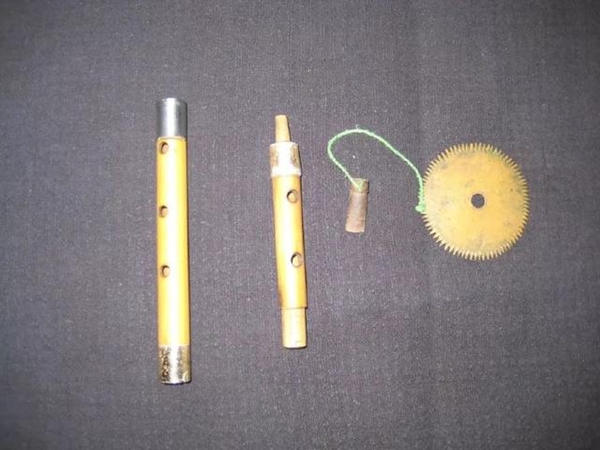The Legendary Origin of Shuanglelang
Shuanglelang, a Buyi double-reed air-sounding instrument, has the same shape as the Bouyei single-pipe Lelang. It consists of two Lelangs with the same length, thickness and pitch tied side by side. Regarding Lelang, there is such a legend in the Buyi villages along the Beipan River.

In the wild era, when the flood hit, people were submerged, and only a pair of brothers and sisters survived by being put in a gourd by their parents. The elder brother was named Mu Yu and the younger sister was named Mu Yan. After the flood receded, the two brothers and sisters depended on each other for life. They often felt depressed because they missed their parents and villagers who passed away, and they only listened to the cicadas to relieve their boredom. One day, Mu Yu, who was lonely and unbearable, used fire chopsticks to pass through a bamboo tube by the fire pond. He happened to hear the sound of cicadas coming from the cracks in the wall. Inspired by this, he made several holes in the bamboo tube. , I want to blow the sound of cicadas to relieve the depression, but no matter how I blow it, it doesn't look like it. Suddenly, he noticed that the cicada's wings kept shaking when it chirped, so he inserted two bamboo pieces as thin as cicada's wings into one end of the bamboo tube. Since then, the Buyi people have an ancient folk musical instrument - Lelang
Later, Lelang gradually became a special musical instrument for Bouyei's descendants to talk about love, and the marriage and love customs of the Bouyei people were passed down from generation to generation.
 渝公网安备 50010702504639号
渝公网安备 50010702504639号